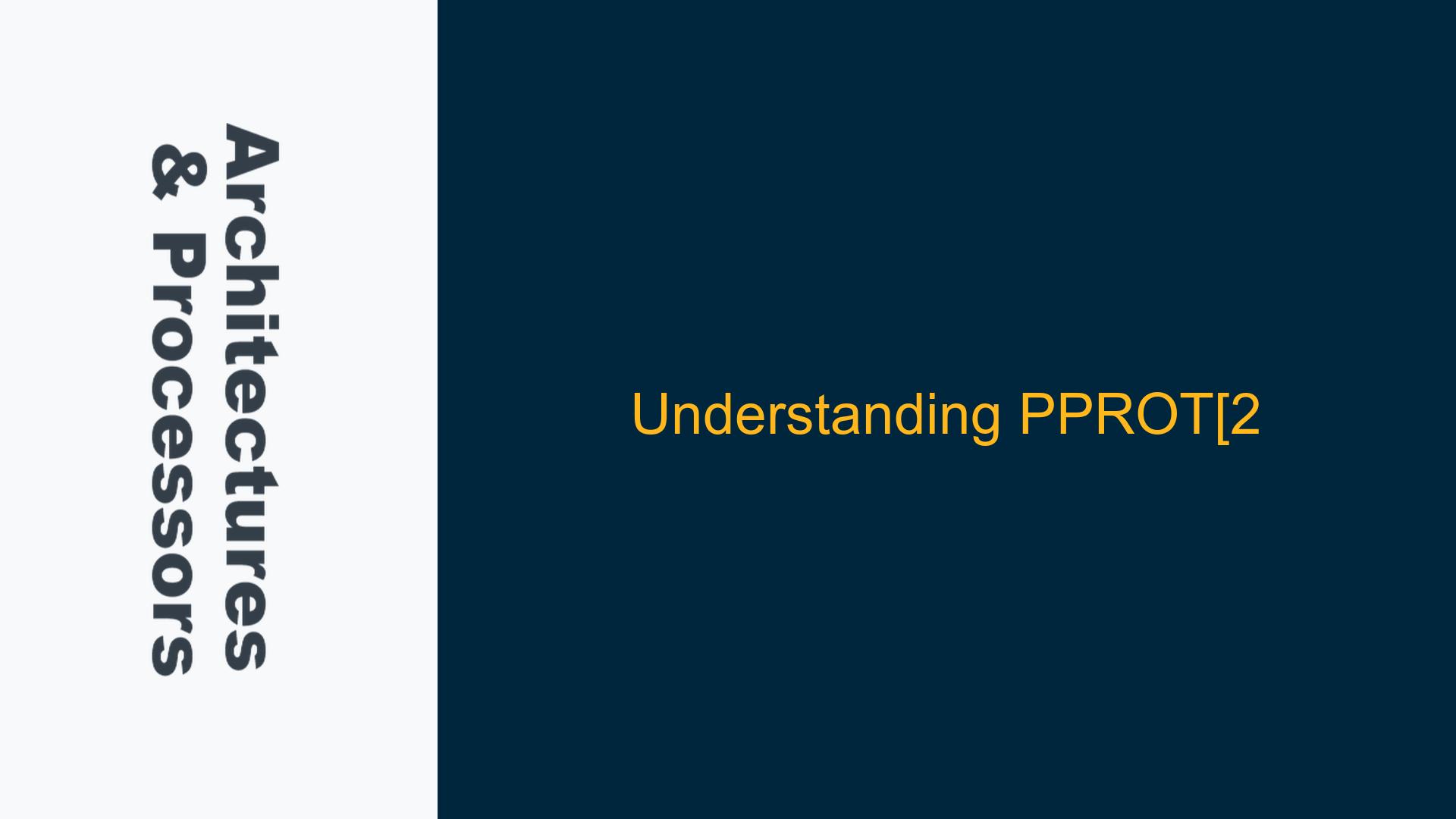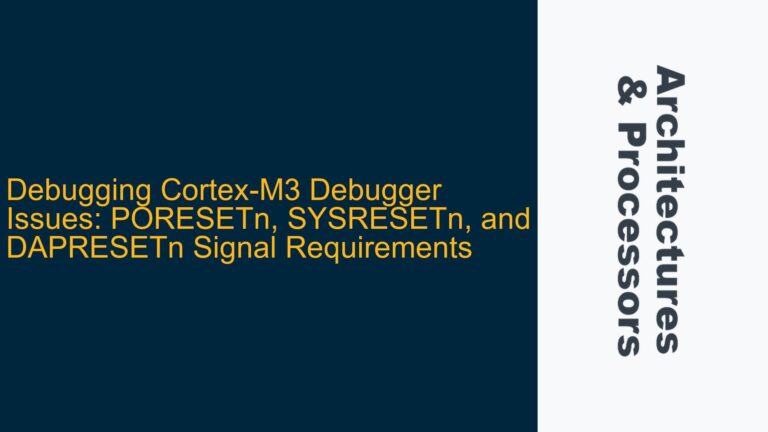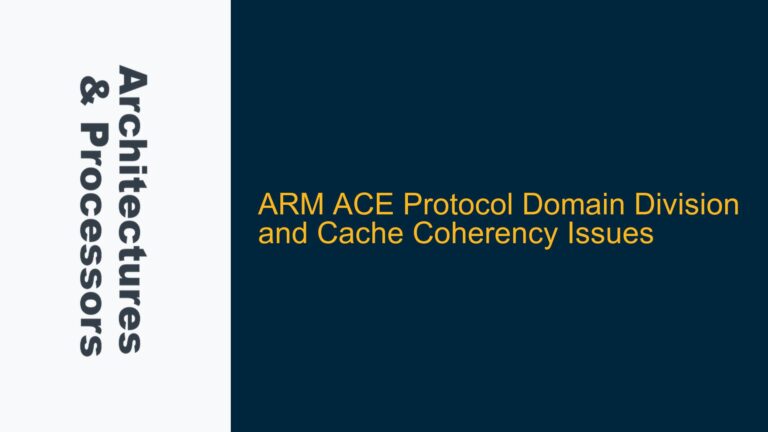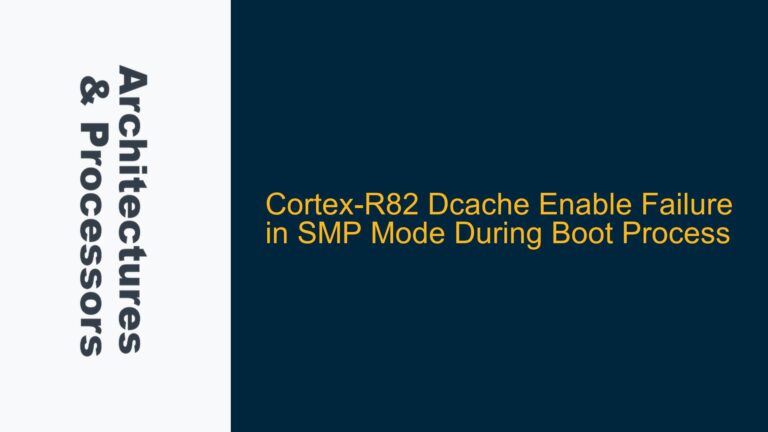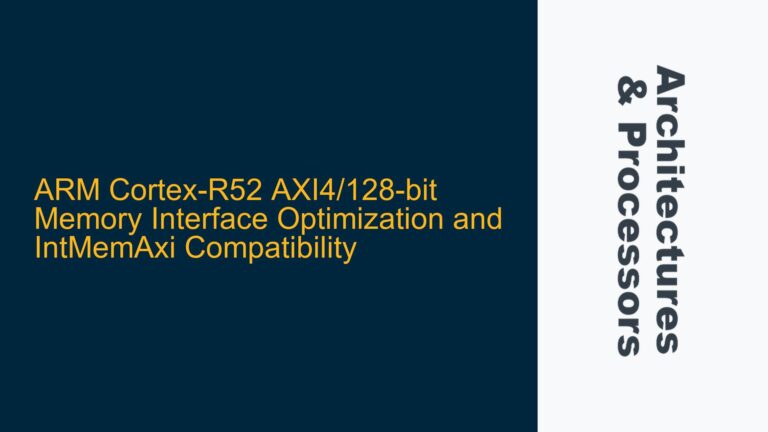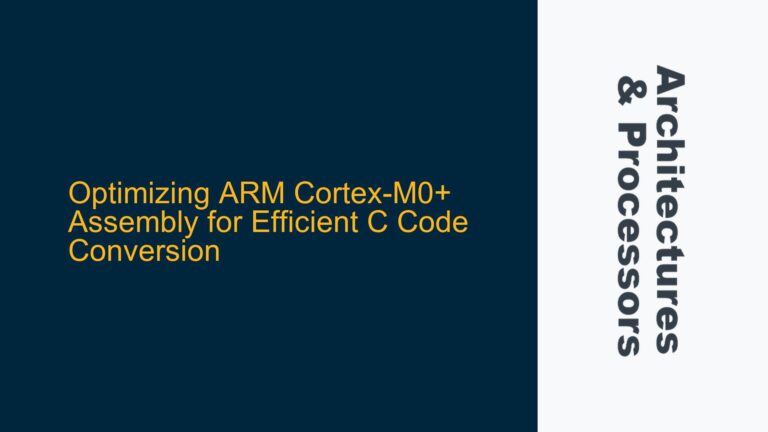ARM APB Protocol PPROT[2] and Its Role in Data vs. Instruction Access
The ARM Advanced Peripheral Bus (APB) protocol is a low-cost, low-power interface designed for peripheral communication in System-on-Chip (SoC) designs. Among its features, the PPROT signal, specifically PPROT[2], plays a role in distinguishing between data and instruction accesses. While this bit is part of the APB protocol, its practical use is often questioned due to the nature of APB’s typical applications. This section delves into the technical rationale behind PPROT[2], its relevance in SoC design, and the scenarios where differentiating between data and instruction accesses becomes critical.
The PPROT signal in APB is a 3-bit protection signal, where PPROT[0] indicates privilege level (privileged or user mode), PPROT[1] indicates security level (secure or non-secure), and PPROT[2] distinguishes between data and instruction accesses. While PPROT[0] and PPROT[1] are commonly used to enforce access control policies, PPROT[2] is less frequently utilized. This is because APB is primarily used for peripheral communication, where the distinction between data and instruction accesses is not typically relevant. However, understanding PPROT[2] is essential for scenarios where peripherals or memory-mapped devices require this differentiation.
In the context of SoC design, the differentiation between data and instruction accesses is more critical in high-performance buses like AXI or AHB, where instruction fetches and data accesses are common. For APB, which is typically used for low-speed peripherals, the need for PPROT[2] is less obvious. However, there are cases where this distinction can be beneficial. For example, in systems where APB is used to interface with memory-mapped devices that store both instructions and data, PPROT[2] can help enforce access policies or optimize performance by distinguishing between the two types of accesses.
Why PPROT[2] is Rarely Used in APB Designs
The primary reason PPROT[2] is rarely used in APB designs lies in the nature of the APB protocol itself. APB was designed to be a simple, low-complexity interface for peripheral communication, with minimal control signals and a straightforward two-cycle transfer mechanism. Over time, additional features like wait states, error responses, and protection signals were added to meet designer demands, but these features are often optional and not universally implemented.
PPROT[2] is a direct carryover from the AXI protocol’s AxPROT signal, which includes bits for privilege level, security level, and instruction/data access. In AXI, these bits are crucial for managing access to memory and peripherals in complex systems. However, in APB, the need for such granularity is significantly reduced. Most APB peripherals do not require knowledge of whether an access is for data or instructions, as they typically handle only one type of access or treat all accesses uniformly.
Another reason for the limited use of PPROT[2] is the typical architecture of SoCs. In most designs, APB is used to connect low-speed peripherals like timers, GPIOs, and UARTs, which do not need to differentiate between data and instruction accesses. High-performance components like CPUs and DMA controllers, which do require this differentiation, are usually connected via AXI or AHB buses. As a result, PPROT[2] remains an optional feature in APB, implemented only in specific cases where its functionality is required.
Practical Applications and Implementation of PPROT[2] in APB
While PPROT[2] is not commonly used in APB designs, there are scenarios where its implementation can provide significant benefits. One such scenario is in systems where APB is used to interface with memory-mapped devices that store both instructions and data. In these cases, PPROT[2] can be used to enforce access policies or optimize performance by distinguishing between instruction fetches and data accesses.
For example, consider a system where a microcontroller core is connected to a memory-mapped peripheral via APB. If the peripheral stores both executable code and data, PPROT[2] can be used to ensure that only instruction fetches are allowed to access certain regions of the peripheral’s memory space. This can help prevent accidental modification of executable code, enhancing system security and reliability.
Another potential use case for PPROT[2] is in systems where APB is used to interface with programmable logic or custom hardware accelerators. In these cases, the distinction between data and instruction accesses can be used to optimize the operation of the hardware accelerator. For instance, the accelerator might use PPROT[2] to determine whether an access is for loading configuration data (data access) or for fetching microcode (instruction access), allowing it to handle each type of access differently.
Implementing PPROT[2] in an APB design requires careful consideration of the system architecture and the specific requirements of the peripherals involved. Designers must ensure that the peripheral’s interface logic correctly interprets the PPROT[2] signal and enforces the desired access policies. Additionally, verification efforts must include test cases that cover scenarios where PPROT[2] is used to differentiate between data and instruction accesses, ensuring that the system behaves as expected under all conditions.
In conclusion, while PPROT[2] is not a commonly used feature in APB designs, it can provide valuable functionality in specific scenarios. By understanding the role of PPROT[2] and its potential applications, designers can make informed decisions about whether to implement this feature in their APB-based systems. When implemented correctly, PPROT[2] can enhance system security, reliability, and performance, making it a useful tool in the SoC designer’s toolkit.
